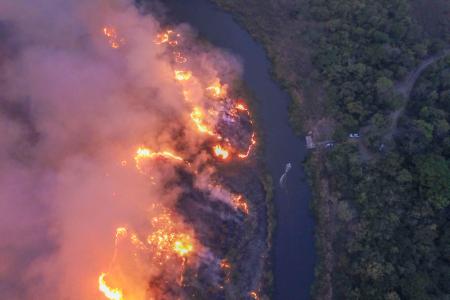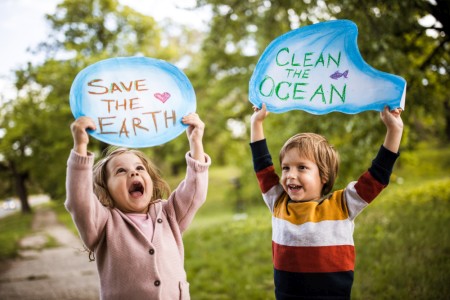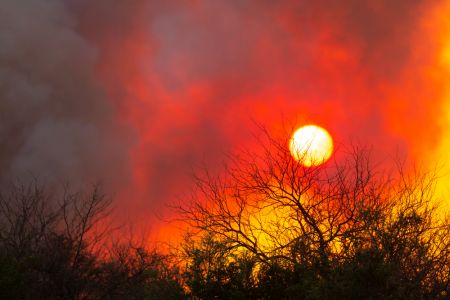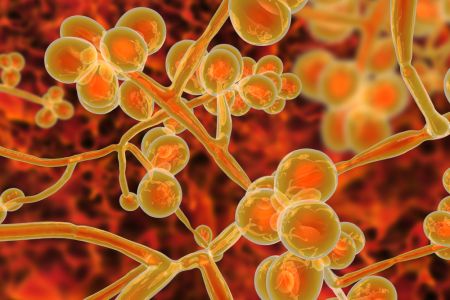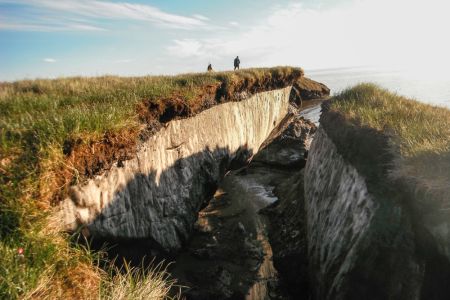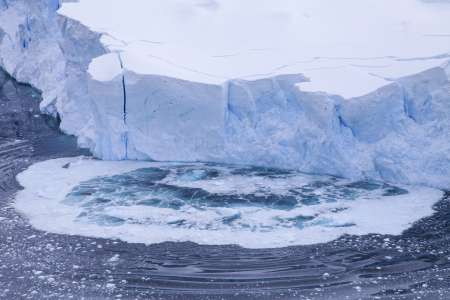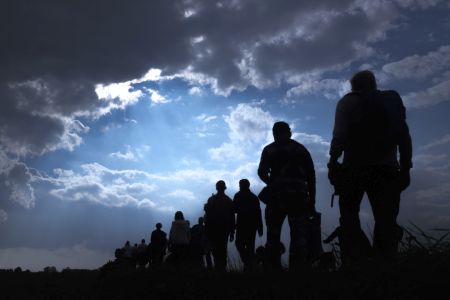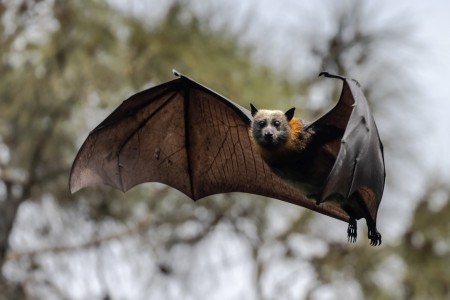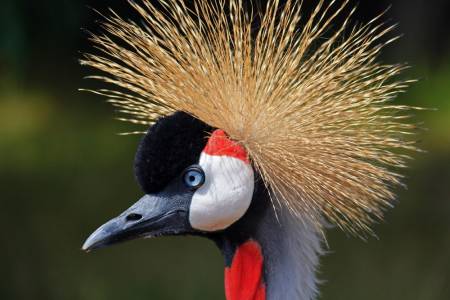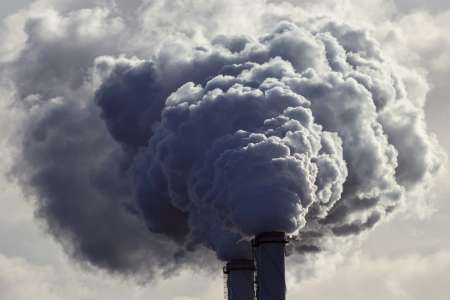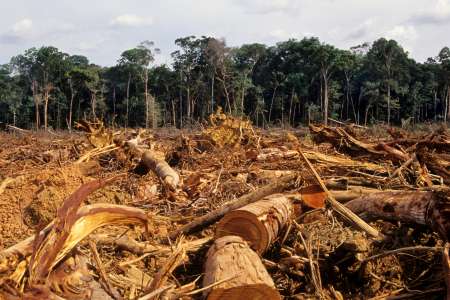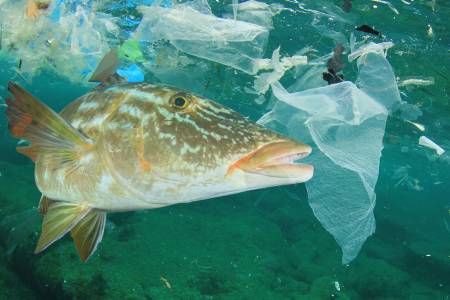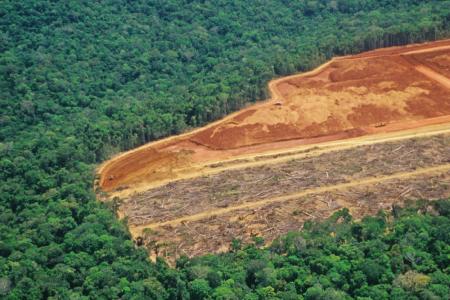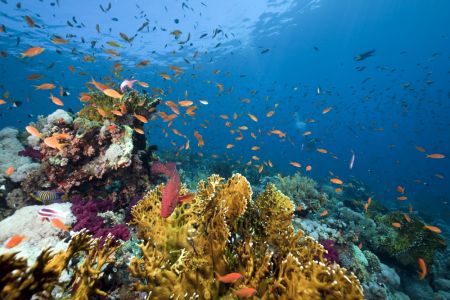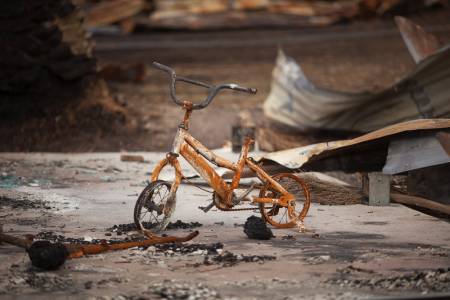Global Climate Change Demands Global Actions
Throughout history, Earth's climate has shifted over long spans of time. Recent human activities, mainly from fossil fuel consumption and deforestation, have accelerated these changes, leading to rapid climate warming and posing significant threats to humans and all living species.
06/17/2024
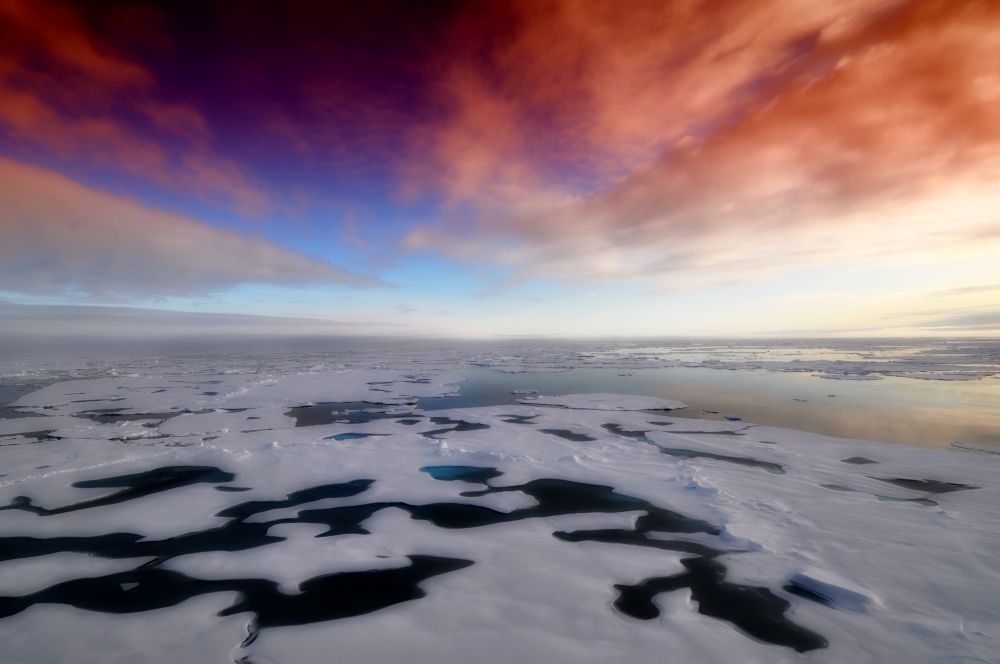
We Need to Understand Climate Change
To fully deal with the climate changes we face, we must first understand the Earth’s historical climate patterns. According to the National Aeronautics and Space Administration (NASA), in just the past 800,000 years, there have been eight periods where the climate has cycled between ice ages and warmer climactic periods. The end of the last ice age, some 11,700 years ago, marks the beginning of when human civilization developed. These changing climate patterns have molded the planet’s landscape and brought about the ecosystems and life forms we value and must have.
Many factors affect climate change, from volcanic eruptions to variations in solar radiation and even large asteroid impacts. For many reasons, humans have been interested in how the climate functions for centuries, especially in the distant past when agriculture relied on a basic understanding of weather patterns and their impact on crops. Fortunately, past changes in the climate were relatively slow, most occurring gradually over millions of years, processes that gave some but not all species time to adapt.
The Human Epoch of Accelerating Climate Change
While Earth’s long history showcases its natural ability to evolve and adapt, recent human activities have brought about unprecedented and far too rapid changes for that to occur. Beginning with the dawn of the Industrial Revolution, humanity began altering the environment at an unprecedented rate, which has been uniquely transformative over the last two centuries. Most of those changes can be found rooted in our use of coal, oil, and, later, natural gas. These energy sources could be harvested for our use, and rapidly doing so made possible the industrialized, modern world we now live in. Our use and dependence on them enabled humans to comfortably live in areas that were once out of bounds due to temperatures that were too hot or cold, as well as other constraints.
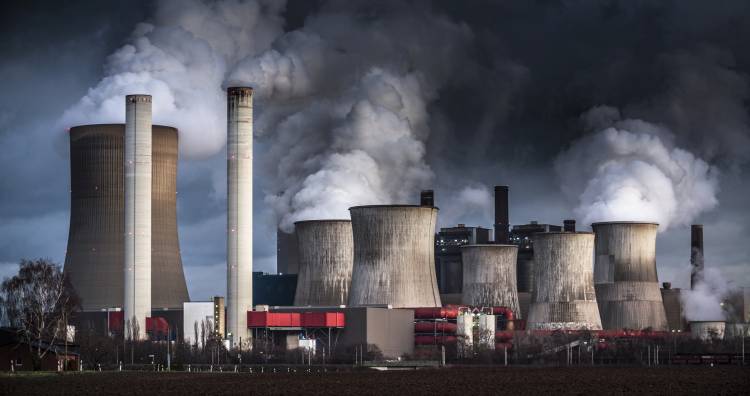
Power plants discharge CO2, a key driver of climate change and global warming. iStock.com/Schroptschop
The burning and use of carbon-based fuels has been a double-edged sword, which lately has created huge issues for every species on the planet. When burned and used in industry, these fuels release incredibly large quantities of carbon dioxide (CO2) and other gases into the atmosphere. Gases we label as greenhouse gases. Like so much else about our planet’s environment, greenhouse gasses have always been present and are a natural process where CO2 and other gases trap solar radiation.
This process is necessary to keep our planet warm enough to sustain life. As the British Geological Society (BGS) pointed out, “Without the natural greenhouse effect, the heat emitted by the Earth would simply pass outwards from the Earth’s surface into space, and the Earth would have an average temperature of about -20°C.” Obviously, this would not be favorable to life on the planet, especially for humans.
The excessive release of these gases by humans is unprecedented and extremely rapid. The changes to our planet’s climate are extremely troubling and dangerous to all life on Earth because they have supercharged the greenhouse effects, leading to what we now term ‘global warming’. This enhanced greenhouse effect has seen the Earth’s average temperature rise by about 1.1°C since pre-industrial times, a change that might seem minuscule but that has profound and worsening implications for everyone on the planet and only grows worse year by year. Compounding the problems associated with these gas releases is our massive destruction of forests, the lungs of the planet, which, when destroyed, can no longer absorb CO2, making the problems even worse.
The manifestations of these changes are evident and alarming!
Our Overheated World
The world is showing unmistakable signs of a sizzling climate, with recent measurements showing record-hot temperatures. Glaciers and ice caps, where nature stored excess water for eons, are receding at alarming rates. As it occurs, the meltwater enters the oceans and, along with the thermal expansion of seawater as it warms, contributes to rising sea levels. Islands and coastal cities, from the Pacific atolls to places like Venice and New York, or countries like Holland and states like Florida, are truly facing disastrous costs as they attempt to mitigate the threat of submersion. Some Pacific island countries are now at or just above sea level and imperiled as never before. As stated by the National Science Foundation (NSF), “Many of the islands are low-lying, often atolls or other islands that rise only a few feet above sea level. The current pace of sea level rise has not been seen for 5,000 years and threatens these low-lying island systems with flooding, coastal erosion, and storm surges.”
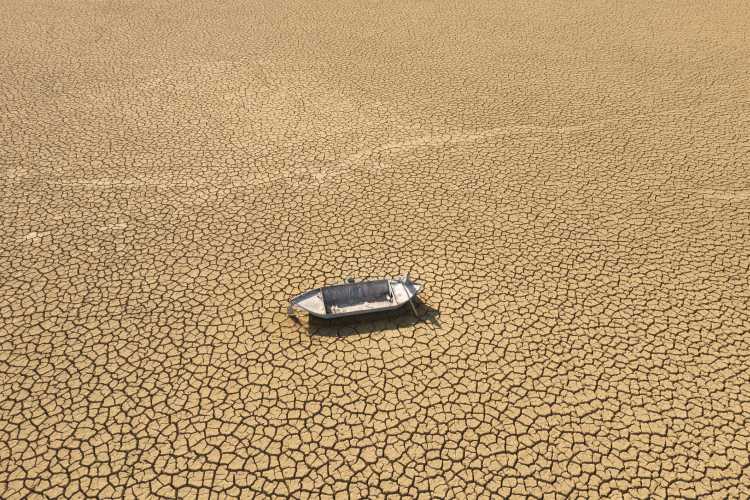
The intensification of droughts and the resulting dry lakebeds are alarming consequences of human-induced climate change. iStock.com/Temizyurek
Climate change also creates erratic and extreme weather patterns. Some previously habitable areas have seen temperatures rise so high that they cannot support human life and native species. Some areas experiencing even less rainfall face drought and arid conditions that impact agriculture. Meanwhile, storms, hurricanes, and cyclones are more intense, leaving trails of devastation in their wake. Forest fires rage almost year-round. Conversely, these regions may then face very heavy rainfall totals and torrential downpours, which, with a lack of vegetation to slow the flow of water, lead to unprecedented flooding and negatively affect agricultural production.
These climatic upheavals are not mere statistical anomalies or single occurrences. They are becoming the norm and pose tangible threats to our planet’s diverse life forms, and causing biodiversity losses.
Biodiversity Under Attack
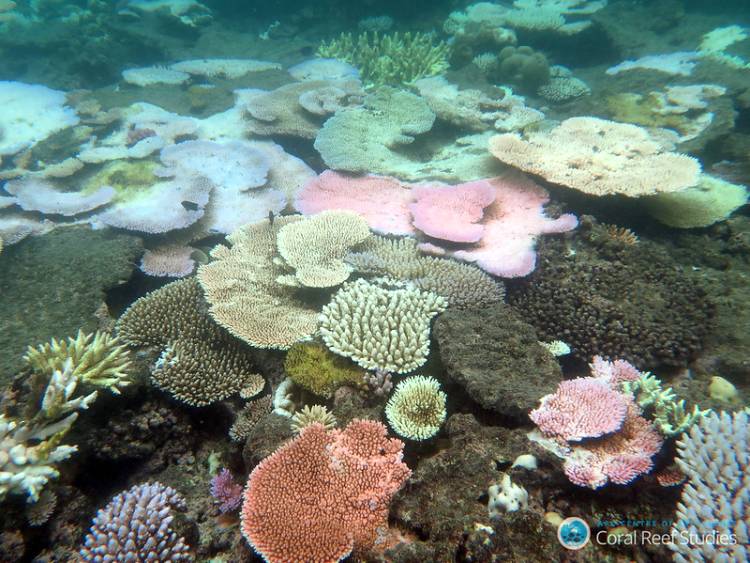
Bleached tabular corals during the 2017 coral bleaching event at Mission Beach, Northern Great Barrier Reef. Credit: © Bette Willis, CC BY-ND 2.0 via flickr
Humans are not the only species suffering from these changes. Flora and fauna, which have, over millennia, become finely attuned to their environments, are being forced to adapt, migrate, or face extinction. Many fail to complete these tasks because they cannot be achieved in short time spans measured in only the few decades it takes for the climate to change. From the polar regions to the oceans, the degradation is everywhere. Polar bears must wander further afield in failed searches for food as Arctic ice dwindles, while coral reefs, so needed as habitats for other species, are bleached and die as the oceans acidify and warm. Birds and insects alter their migration patterns, and plants bloom at different times, all in response to the changing climate cues.
There is no species on the planet that is not being affected by the changes we are bringing to the planet’s climate. The United Nations (UN) projects that approximately one million species face the risk of extinction within the coming decades. A recent study by Gerardo Ceballos, published in the Proceedings of the National Academy of Sciences (PNAS), shows that not only are individual species going extinct, but that entire branches, containing many species, are completely vanishing in what they call a “mutilation of the tree of life.” It is unwise to believe that humans can exist if we continue to destroy the climate and allow mass extinctions to follow. Undoubtedly, as these ecosystems deteriorate and species extinctions grow, the ripple effects extend into the entire natural world, profoundly affecting human societies worldwide.
Socio-Economic Repercussions
Without interventions, the effects will harm human society as the climate inexorably changes yearly away from the norms that supported human existence for millennia. The environmental consequences are not abstract concepts discussed in academic circles, as was the case a few years ago. They are already present and profoundly impact various aspects of global communities, touching the lives of billions.
Archeology shows us that human farming began about 12,000 years ago and was the very foundation upon which human civilization was built and thrived. This achievement arose from a favorable climate that lent itself to organized agriculture. Those conditions worsen in many parts of the world, drastically reducing crop yields and increasing food scarcity. In a global economy, these scarcities lead to inflated food prices globally.
Areas that had long thought of themselves as insulated from the worst Mother Nature can dish out are now discovering their vulnerabilities. Once considered anomalies in these regions, natural disasters are becoming more frequent and intense, causing huge costs in lives and infrastructure. Consequently, governments and communities must allocate vast, record-breaking financial resources toward rehabilitation, reconstruction, and preventative measures. In less developed regions, where money is not available, and solutions are not to be had, the populations are daily facing extreme consequences such as starvation and death. The human costs are immense and rising.
Individuals living in areas that are particularly susceptible to these climate-induced adversities are forced to flee or perish, giving rise to a new class of displaced individuals who are referred to as “climate refugees.” These forced displacements are not only tales of personal tragedies they also trigger broader socio-economic implications. With no other viable choices, those affected flee toward developed nations where they are often not wanted and where their arrival imposes huge costs upon host nations.
As environmental changes make resources like water, arable land, and habitable spaces ever scarcer, peace disappears and is replaced by conflicts and war. Rivalries and disputes over access to these vital resources escalate, leading to tensions within the borders of nations and between them. Once again, normal citizens are left paying the highest costs, and such challenges further complicate the intricate web of geopolitical relations, making the future uncertain and underscoring the urgency for increased global collaboration.
Only a Collective Response Will Solve Global Challenges
The multi-faceted challenges of climate change, affecting both our environment and societies, underscore the need for a unified, global response. While all of us, many living in developed countries, are part of the problem and therefore part of the solution, many countries, like South Pacific island nations that have not been part of what drives climate change, are paying the largest costs as rising waters submerge their countries.
Over the past decades, nations have come together in forums like the United Nations to chart a way forward on serious issues. The Paris Agreement is one such accord, which was ratified by most nations and was designed to limit global warming to well below 2°C above pre-industrial levels while aiming for a more stringent 1.5°C limit. Most credible sources now declare that we will exceed the 1.5°C limit and possibly even go past 2°C.
Multi-pronged approaches are needed to address the issues. Fossil fuel dependence must give way to renewable energy sources like wind, solar, and hydroelectric power and, over time, be eliminated as much as possible. Forests are vital carbon sinks needing protection and rejuvenation. Agriculture and transport, significant greenhouse gas contributors, need sustainable overhauls. Inaction and continuing rising temperatures will make anything we spend now to prevent ecological disaster seem like pocket change in retrospect if we allow the unthinkable to occur. Changing how we conduct ourselves will not be easy, and the costs will be enormous. Governments must play an indispensable role in addressing the issues.
While these broad policies and global accords are paramount, the collective power of individual actions cannot be understated as they drive real, tangible change.
Individuals: Catalysts of Change
None of this is to say that individual actions also need to play a pivotal role. Our personal choices, from dietary habits to transportation, all have carbon footprints. Opting for less meat consumption and a more plant-based diet, using public transport, conserving energy, and supporting sustainable practices can cumulatively make a significant difference. Each of us must do our part to reduce our fossil fuel energy use. Even lowering your thermostat by one or two degrees, when multiplied by billions of others doing the same thing, will make a dent. A bonus in doing this is that reducing your usage lowers emissions and pays dividends in lowered energy bills.
Technological innovations also hold promise. Technology can be a potent ally in the fight against climate change, from carbon capture and storage solutions to advancements in green energy. Yet, it cannot be the solution to overcome continued, rising carbon fuel use.
We Can Defeat Climate Change
Global climate change, arguably the most pressing issue of our time, is a complex interplay of natural processes severely and negatively affected by human activities. Its repercussions, already manifesting, will intensify unless addressed proactively.
In this huge crisis are great opportunities—the prospect for innovation, cooperation, and creating a sustainable, harmonious world. By understanding our shared responsibility and the urgency of the situation we can work collectively towards solutions. Every action counts towards building a better future. It’s a journey toward a sustainable future requiring unwavering commitment, patience, and collaboration.
The scientific community can help guide this transition by continuing their research and offering innovative solutions to combat and adapt to climate challenges. We must elect leaders who will enforce and strengthen policies that reduce, and eventually curtail, most carbon emissions, incentivize renewable energy, and promote conservation efforts. Industries will have to transition to sustainable energy and pollution practices, prioritizing long-term planetary health over short-term gains in profits.
On a grassroots level, community-led initiatives will act as powerful change agents. Communities can engage in afforestation efforts, sustainable agriculture, and local conservation projects. Educating the younger generations about the importance of sustainability and the tangible impacts of climate change is vital—ensuring that they grow up with an innate sense of responsibility towards the planet.
Financial investments must be directed towards cleaner, renewable energy sources like solar, wind, and hydroelectric power. As these technologies advance and become more affordable, they will be crucial in reducing our reliance on fossil fuels. Research into new technologies, such as harnessing hydrogen as a power source, efficient battery storage systems, electric vehicles, and carbon capture techniques, is paramount.
At this heart lies a simple, unifying truth: Earth is our only home. Every meadow, forest, river, ocean, and all species are an interconnected web of life. Our planet’s health, or lack thereof, directly impacts human well-being and our futures. By recognizing the intrinsic value of nature and its ecosystems, we will move away from exploitative practices and towards a harmonious coexistence. There’s every reason to believe that we can navigate the complexities of climate change and ensure a prosperous and thriving planet for generations to come.

